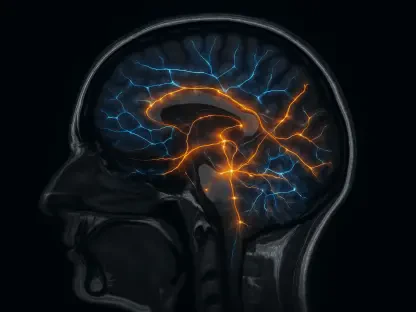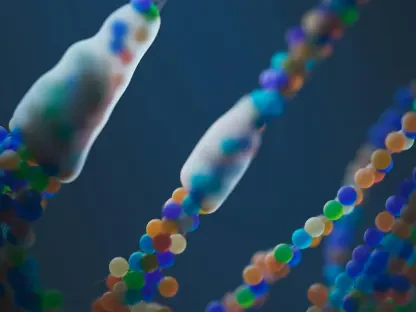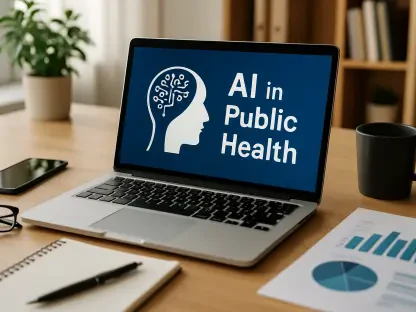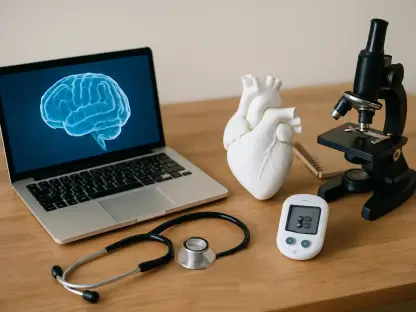The latest statistics highlight the increasing importance of medical technology innovations in today’s healthcare sector. The digital health market is rapidly expanding, with over 400,000 healthcare apps available and 200 new daily additions. These apps offer various tools, from general wellness to specialized trackers.
80% of US consumers see benefits in telehealth services. Notably, the adoption of wearable technology and telehealth can save the healthcare industry around 200 USD and three hours per patient visit. So, let us take you on a tour of the latest innovations in medical technology and their benefits.
Healthcare’s New Frontier: At-Home Diagnostics
The North American market of medical wearable devices will grow to 33.6 billion US dollars by 2026. We have benefited from these miniature electrical and electronic gadgets in healthcare since the pacemaker in 1958. Medical devices have transitioned from operating rooms and specialist facilities to the hands of non-medical professionals, and we are seeing a growing popularity of in-home testing. People have been able to monitor blood glucose levels or get pregnancy tests in the privacy of their own homes for years. But more recently, healthcare advancements have enabled us to live in the future and benefit from many key devices in the comfort of our homes:
Vital Signs at Your Fingertips:
- Blood Pressure Monitors: Monitor cardiovascular health by measuring blood pressure levels regularly.
- Wearable ECG Monitors: Measure heart rate and rhythm to detect heart conditions.
- Fitness trackers: Track physical activity and heart rate, and send notifications about your progress. This group includes smartwatches and Fitbits.
- Biosensors: Measure biological or chemical reactions for markers indicative of disease; for monitoring, drug discovery, and other detections. They have many applications, such as smart lenses that measure metabolites and intraocular pressure; smart clothes that detect muscle contractions and monitor hydration; wrist wearables that look for early hypertrophic cardiomyopathy (HCM) symptoms, and electrochemical microneedles that track dopamine levels and serve as early detection for Parkinson’s disease.
- Glucose Meters: These monitor blood sugar levels and alert you to sudden changes.
- Cancer cell detection: Currently under development at the University of Michigan. The implant will continuously monitor you for circulating tumor cells.
- Wearable exoskeletons: Soft robotic wearable devices that aid mobility after a stroke, spinal cord injury, or in the case of multiple sclerosis and amyotrophic lateral sclerosis.
- Pregnancy Monitors: A device with Doppler technology monitors the baby’s heartbeat and the mother’s contractions. Another sensor tracks the mother’s critical body functions, like oxygen levels and peripheral body temperature.
- Baby Temperature Monitors: Brands like Vivalink’s Fever Scout and TempTraq developed baby thermometers that can monitor the baby’s temperature for 24 hours and connect to a parent’s smartphone via bluetooth to alert them if the temperature spikes.
Wearables: Saving Bucks, Saving Lives
Besides monitoring health, wearable devices reduce healthcare costs, signaling a revolution in the field. In addition to patients saving money by having a personal, miniature robo-doc, medical professionals gain the advantage of early intervention via data transmitted from the device. The transition promises to continue reducing the burden on healthcare facilities, aiding further money saving.
Despite some challenges in the initial stages of integrating wearable devices into clinical applications, we have seen some success stories. Ochsner Health System and Kaiser Permanente developed digital programs for monitoring hypertension and diabetes. At Kaiser, they used a glucometer; at Ochsner, they used a blood pressure monitor, two of your everyday, at-home digital devices. The wearables send real-time data to the electronic health record, facilitating communication that also translates to clinical directions to patients.
Organ Rejection Alert System
Another example of this technology in action is the new implant-rejection detection tool. Northwestern University researchers have developed an ultrathin electronic chip to monitor transplanted organs in real time, focusing mainly on kidney transplants for the moment. The small, thin, and soft implant goes directly on the surface of the new kidney. Its design allows it to detect inflammation-related temperature changes instantly instead of the usual methods. Typically, there are several weeks of lag between kidney inflammation and the first symptoms in the body. Scientists call this chip the first device to spot organ transplant rejection. It alerts the patient or their physician wirelessly and promptly via a smartphone or tablet. When testing this method on animal models, the implant showed warning signs of kidney rejection up to three weeks before the biopsy and blood biomarker results, increasing chances for successful and timely interventions.
Nana’s Bionic Eye
In 2022, the news exploded with a triumphant story of the first bionic eye transplantation. The surgery was successful and helped an 88-year-old woman partially restore her deteriorating vision due to dry AMD. The transplant occurred at Moorfields Eye Hospital, where the doctors inserted a 2mm wide microchip under the woman’s retina. A camera inside it scans the surroundings, transmitting data through the chip, which converts data into electricity and sends it to the brain. Affectionately nicknamed “Bionic Nana” by her grandchildren, she will undergo further testing and treatment to ensure she is happy and healthy.
However, this wasn’t the first operation of its kind. In November 2021, another man from London became the first person in the world to have a 3D-printed bionic eye implant. He also suffers from dry AMD, and he received his treatment at the Manchester Royal Eye Hospital. And in 2016, a woman from Cardiff became part of the NHS-funded research and underwent surgery at Oxford’s John Radcliffe Hospital. Before the procedure, she was blind in her right eye (and virtually no vision in her left), but now she can read for the first time after six long years thanks to a tiny electronic chip at the back of the retina.
A New Lease on Life: Innovations in Medical 3D Printing
3D printing has propelled medical diagnostics into the future by producing precise replicas of patient anatomy. Surgeons use these detailed models to train and plan procedures, thus reducing surgical risks. 3D printing has also revolutionized implants and prosthetics because users can get a fully custom product that fits them comfortably. Further, researchers aim to create functional organs and tissues based on a patient’s cells using advanced 3D printers. When they succeed, transplant success rates will witness groundbreaking results due to tissue engineering.
Hot Off the 3D Press
- restor3d, Inc., has successfully printed patient-specific femoral implants at a fraction of traditional costs. Their technology promises superior mechanical properties, revolutionizing joint implants.
- Materialise printed an innovative arthroplasty system that replaces upper jaw part(s) that allows you to yawn, chew, and open your mouth. Millions of people suffering from Temporomandibular Disorders (TMD) will be able to heal and return their lives to normal.
- Snapform is a prosthetic clinic that prints affordable, custom-fitted prosthetics using Fused Deposition Modeling (FDM) and the SimFit prosthetic fitting engine, accelerating accessibility for amputees worldwide.
- Duke University and Harvard Medical School scientists have successfully tested a biocompatible ink that solidifies into different 3D shapes under ultrasound waves. The sono-ink is the next step-up in the evolution from transparent ink. It allows deep-penetration acoustic volumetric printing, or in other words, applications such as bone healing and heart valve repair in deep tissues.
- Open Bionics helped Christa Seubert from Germany, the oldest person to get a bionic hero arm. The 84-year-old grandma had an aggressive cancer that led to an amputation, but within one hour of fitting, she was able to use her new bionic Hero arm independently.
Nanoparticles in Action
Nanomedicine is a new medical diagnostic that relies on nanotechnology. The tiny nanoparticles are as small as the molecules in your body and can be helpful for in vivo and in vitro studies. Integrating nanomaterials with biology can diagnose, monitor, and treat medical conditions by targeting exact parts and cells in the organism. They can also deliver drugs to specific cells in the body, reducing the side effects of medications by administering just the right amount of the drug, and not an ounce more. Furthermore, nanoparticles can potentially combat antibiotic resistance, which is currently under research.
Last year, nanomedicine sales exceeded 190.58 billion USD. It is now part of a vast array of applications, such as diagnostic medtech, contrast agents, machines for analysis—and as mentioned, drug delivery catalysts.
mRNA’s Promise in Tailored Therapies
mRNA technology has gained considerable recognition for its part in developing COVID-19 vaccines. The mRNA molecule is also called messenger RNA because it carries the essential instructions that cause the cells to make a certain protein. In this process, our bodies dispatch defenders called antibodies and T-cells, our immune system’s fire alarm. Because of this mRNA trait, researchers can harness its mechanism to quickly target the genes they want to detect mutations and disorders. mRNA has excellent potential in individualized therapies and cutting treatment costs in the long run, promising a bright future for personalized therapies tailored to individual patients.
Conclusion
Altogether, the future of medical tech is looking pretty exciting. As we continue to celebrate the evolution of medical tech innovations, we can expect more genetic breakthroughs that will allow healthcare to become a lot more customized and effective. As institutions adopt 3D printing, nanomedicine, mRNA, and other advancements that are yet to come, we will enjoy a healthier and longer life. We may be heading towards a bionic future where self-healing nanotechnology is as available as your standard cold sore medicine.









